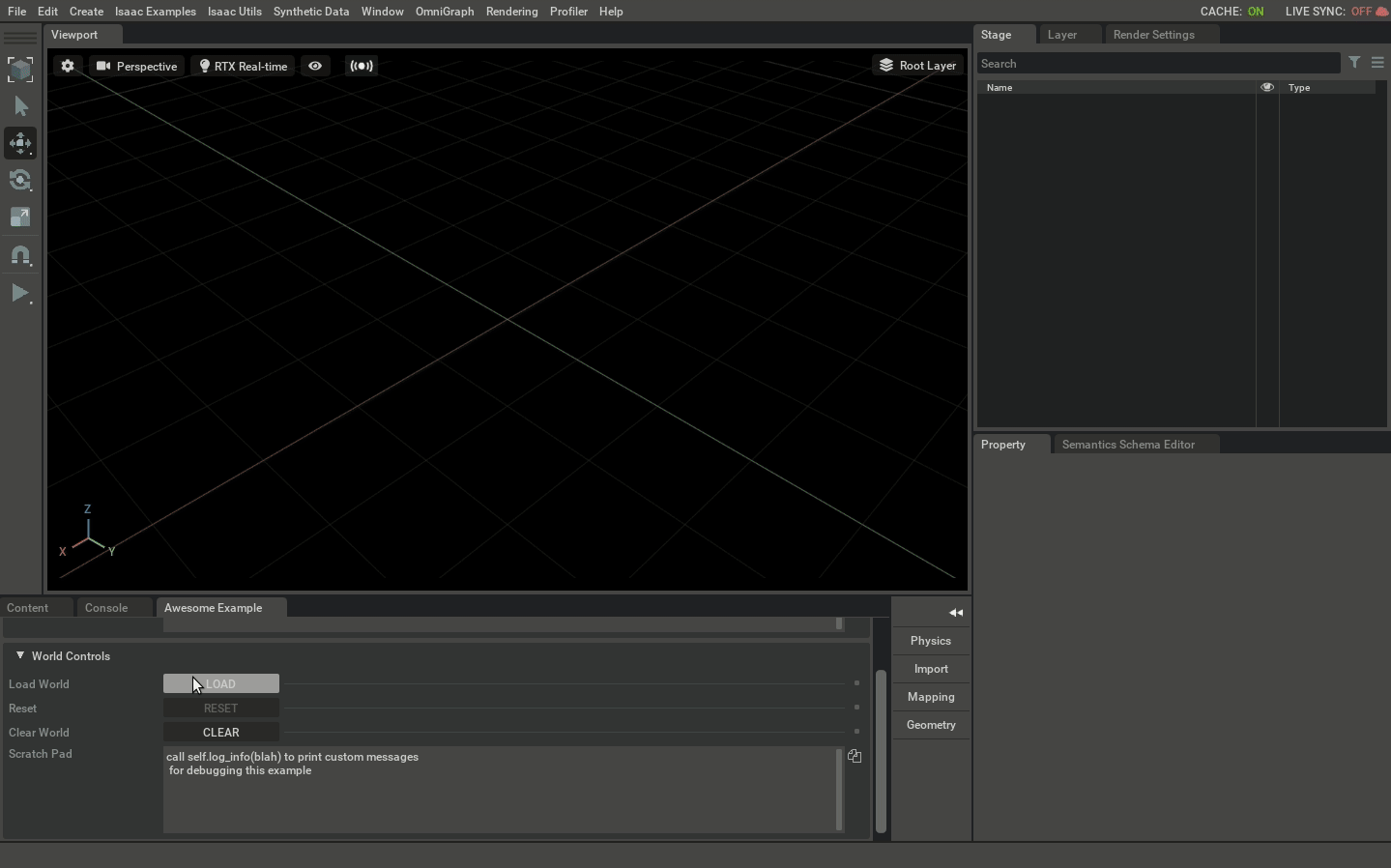6. Adding a Manipulator Robot¶
6.1. Learning Objectives¶
This tutorial introduces a second robot to the simulation, a Franka Panda manipulator.
It shows how to add the robot to the scene and use its PickAndPlaceController class.
After this tutorial, you will have more experience using different robot and controller classes in Omniverse Isaac Sim.
15-20 Minute Tutorial
6.2. Getting Started¶
Prerequisites
Please review Adding A Controller prior to beginning this tutorial.
Begin with the source code open from the previous tutorial, Adding A Controller.
6.3. Creating the Scene¶
Let’s begin by adding a Franka robot from the omni.isaac.franka extension plus a cube for the Franka to pick up.
6.4. Using the PickAndPlace Controller¶
Let’s add a pick and place controller from omni.isaac.franka so that the Franka picks up the cube and places it somewhere else.
6.5. What is a Task?¶
The Task class in Omniverse Isaac Sim provides a way to modularize the scene creation, information retrieval,
calculating metrics. It is useful for creating more complex scenes with advanced logic.
Let’s re-write our previous code using the Task class.

6.6. Use the Pick and Place Task¶
Omniverse Isaac Sim also provides different tasks under the many robot extensions.
Let’s re-write the previous code using the PickPlace class.
6.7. Summary¶
This tutorial covered the following topics:
Adding a manipulator robot to the scene.
Using Controller Classes from Omniverse Isaac Sim.
Modularizing the creation of scene objects and interacting with them through Task Classes.
Using Task Classes from the robot extensions in Omniverse Isaac Sim.
6.7.1. Next Steps¶
Continue on to the next tutorial in our Essential Tutorials series, Adding Multiple Robots, to learn how to add multiple robots to the simulation.